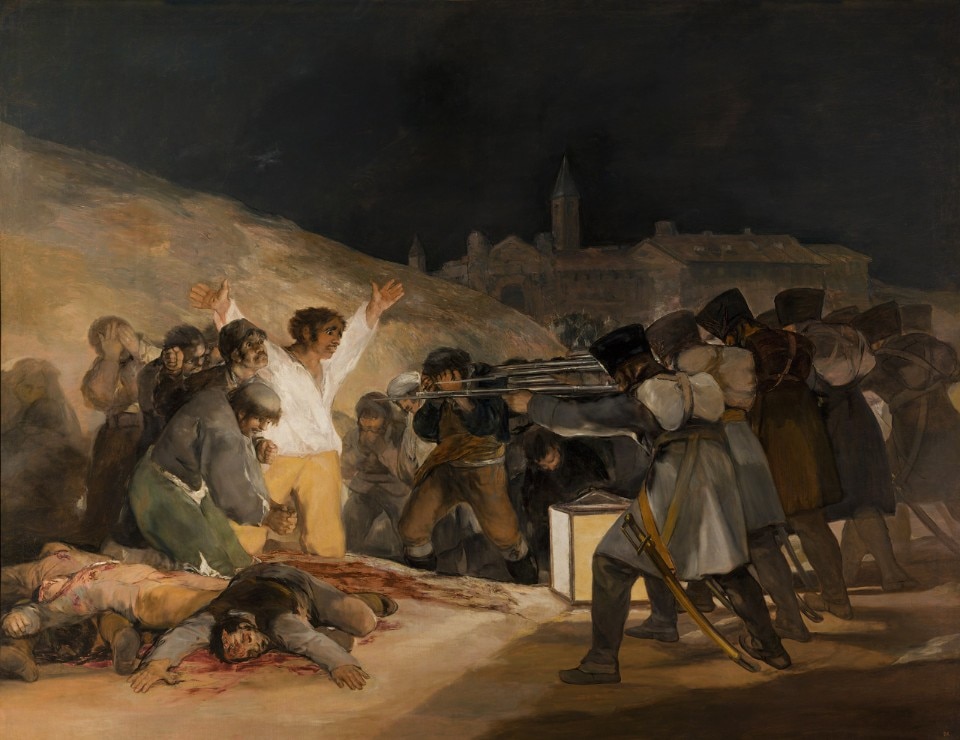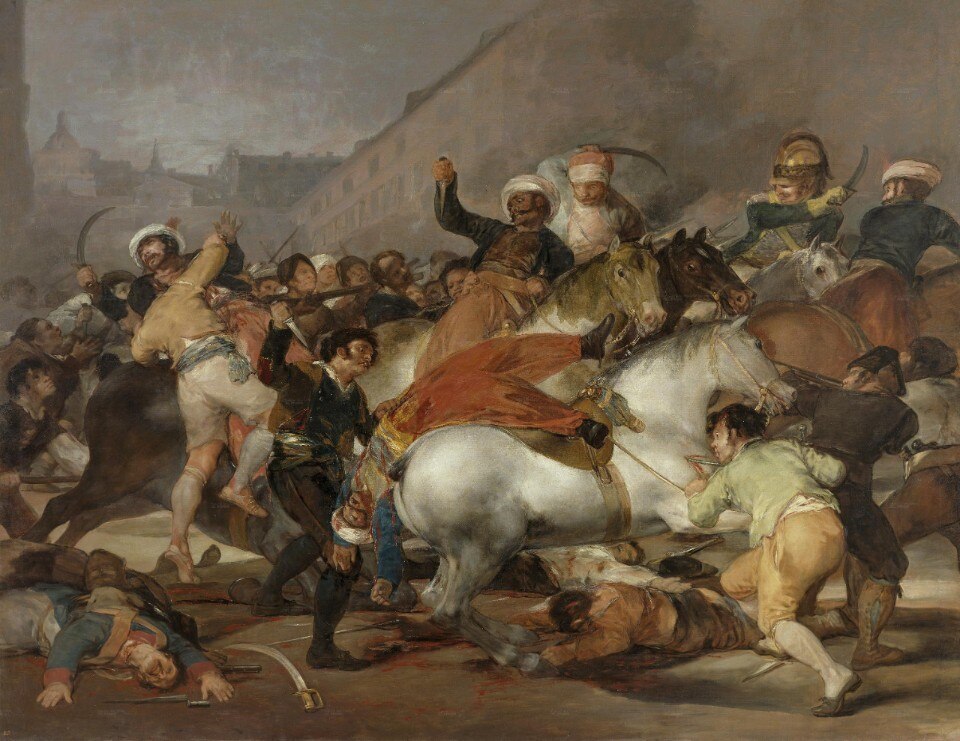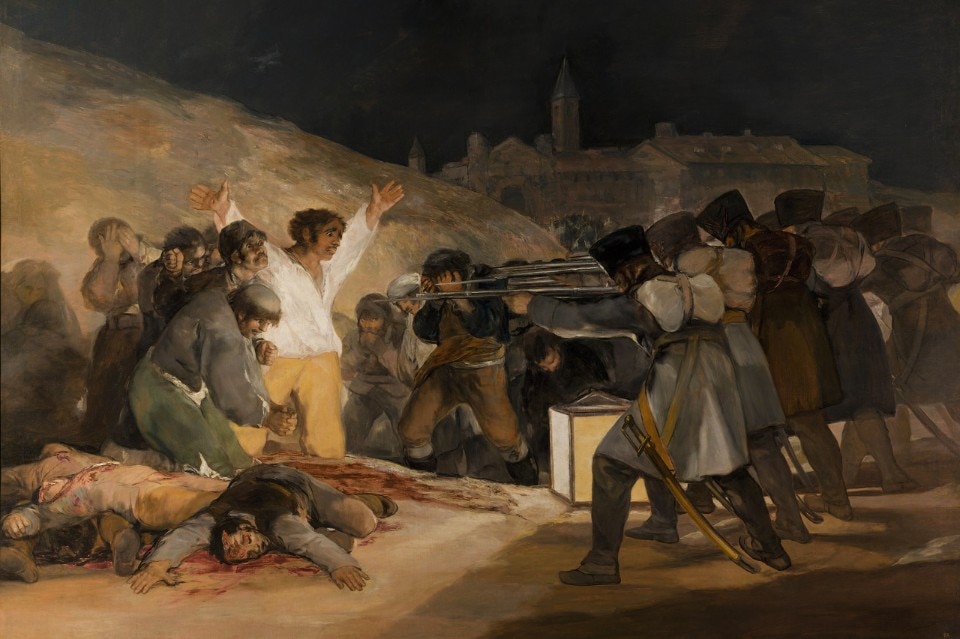320 civilians were killed in Bucha by the Russians. It was the mayor of the city, Anatoliy Fedoruk, who gave an estimate of this horrendous crime. “I was hiding in a house and saw a car full of people trying to escape. Civilians on the run. The Russians fired at the car and the man inside was begging not to kill his pregnant wife, but they fired in cold blood.”
These are the statements made by those who have seen and experienced the city that has now become a symbol of the horrible war crimes perpetrated by the Russians throughout the country.
The numbers are growing by the day. Bucha, Bodoryanka, Mariupol and who knows how many more. Buildings destroyed by bombing, houses burnt down and mass graves. Suddenly, an artwork from another time and another invasion comes to mind: The Third of May 1808, also known as Los fusilamientos del tres de mayo by Francisco Goya. The painting, which the artist made in old age, celebrates the sacrifice of the Spanish patriots who resisted the invasion carried out by Napoleon’s troops.

The scene is completely plunged into darkness. A group of terrorized men covers their faces with their hands. They look desperate and tired, about to surrender to a cruel fate, guilty only of defending their freedom, their towns and their history. The firing squad is seen from behind, their faces insignificant to the artist, who nevertheless describes the clearly Napoleonic uniforms in detail. Madrid can be barely seen in the background. All lights are off as if the city were deserted, as if it were dead.
The scene, painted with fast, dramatic brushstrokes, takes shape and three-dimensionality through an emotional and structural climax of the figures themselves. In fact, the first soldier appears larger than the last one. The corpses in the foreground, painted using warmer colours, set the tempo for the whole scene and the figure in the centre, with his arms raised, seems to mark the rhythm.
I was hiding in a house and saw a car full of people trying to escape. Civilians on the run.
When looking at the painting from right to left, we see the feelings changing. Despair, surrender, death. The figure in the centre seems to become the subject because he is the only one completely illuminated and in full view. His white shirt, inexplicably spotless, represents the purity, virtue and justice of the person and all the other companions who are being unjustly killed.
The rifles, which draw perfect lines in the construction of the painting, always lead the story toward the man in the centre who breaks the lines by raising his arms and building new ones as if to defend himself. An oblique line starts from the now dead bodies and continues to the city, marking the story and continuing it.

However, this painting is the second part, the continuation of the painting The Second of May 1808. Puerta del Sol, Madrid. A crowd is attacking the Mamelukes, a Turkish cavalry unit serving in Napoleon’s Imperial Guard. News spreads through the streets that members of the royal family have been taken prisoner and brought to France. A group of patriots rise up.
An entirely different style, the brushstrokes, the colours, the city and the characters themselves interpret the strength and tenacity of a nation that does not want to succumb. But on the following day, 3 May, Napoleon’s army rounded up and killed the rebels. This episode marked the history of Spain just as Bucha will mark the history of Ukraine.
2 April in Bucha, 3 April in Odessa. More war and violence. What have we not understood? How many more manifestos of pain must be painted to make it clear that it is always the innocent who pay the price?


